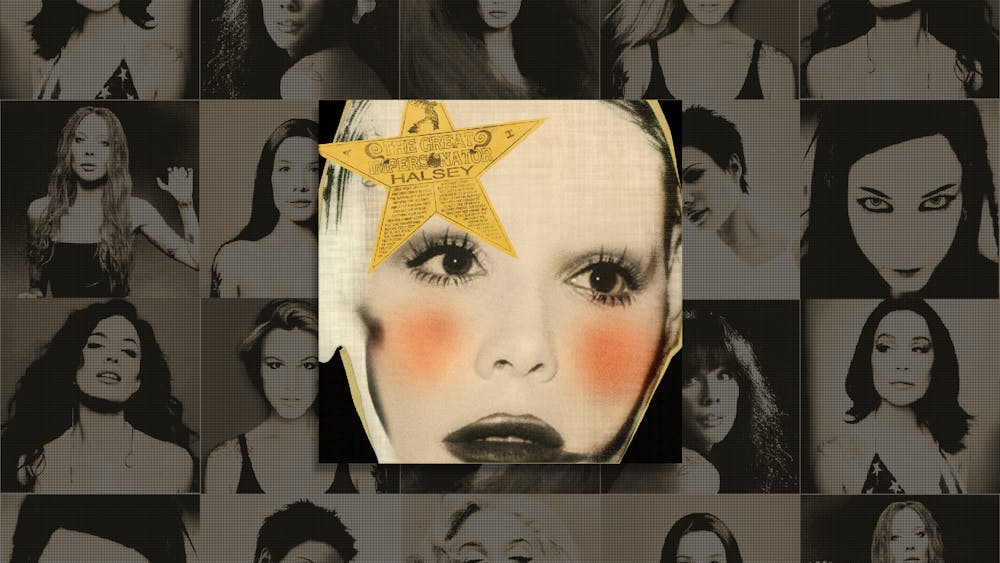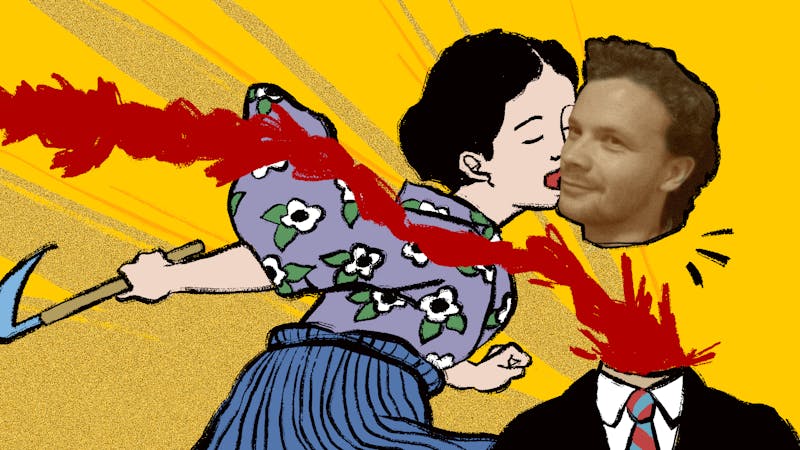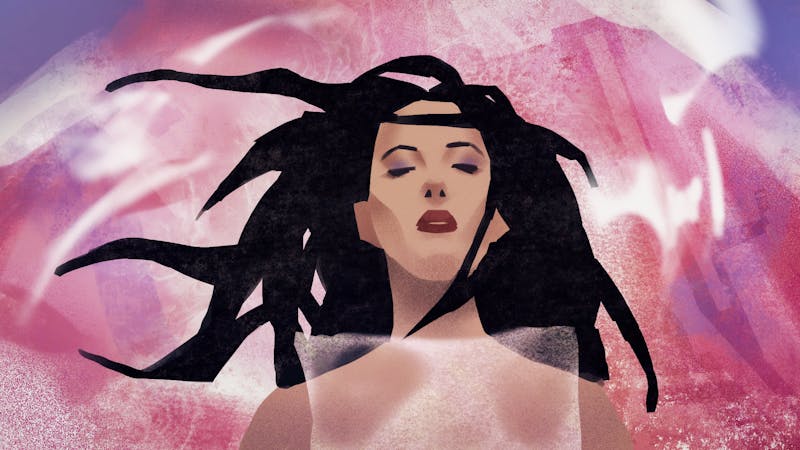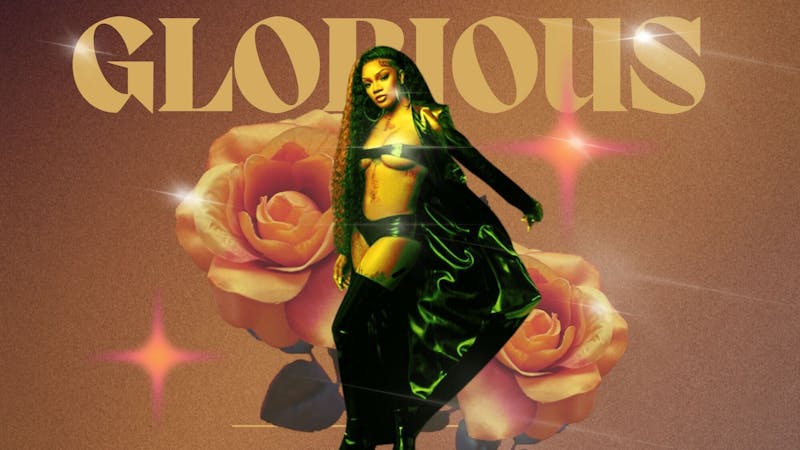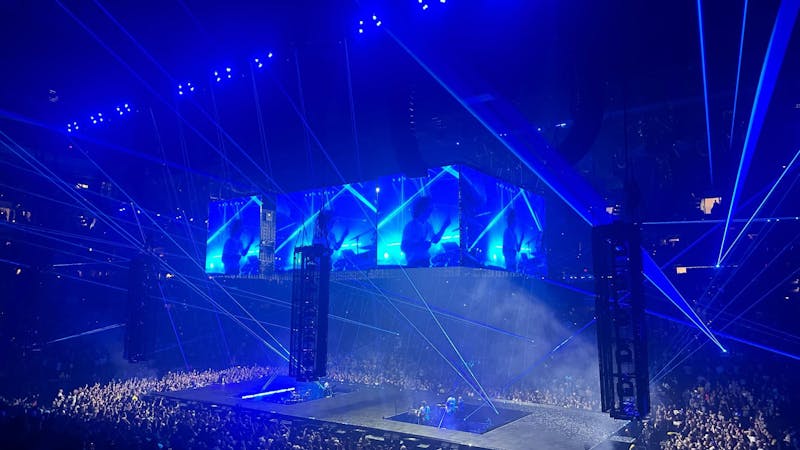The roll out for Halsey’s fifth studio album, The Great Impersonator, was anything but subtle. For eighteen days prior to the release, Halsey posted pictures of herself on Instagram dressed as her greatest musical influences. Amongst the greats they dressed up as were Dolly Parton, David Bowie, Fiona Apple, PJ Harvey, Bjork, Britney Spears, Joni Mitchell, and Bruce Springsteen. It was clear from the start that Halsey wanted us to get up close and personal with The Great Impersonator, revealing the significant figures that influenced each track—but this would only be the tip of the iceberg. In The Great Impersonator, Halsey truly rips themselves open, revealing all the light (as well as the darkness) that exists within them and recounting their past few years spent battling with illness, coming to terms with motherhood, and finding love. While some of the tracks, or “impersonations”, on this album fall flat at times, the album as a whole is Halsey's most earnest, intimate, and deeply personal work yet.
In true impersonator fashion, the first single released for the album was Halsey’s take on Britney Spears’ “Lucky.” They rework the lyrics to reflect what was going on in their life, singing, “I shaved my head four times because I wanted to / And then I did it one more time 'cause I got sick (I am so lucky).” While Halsey gives the song a nice personal touch, the single feels like a reinvention of the wheel. The main message of Spears’ “Lucky” is the same as that of Halsey’s interpretation: we idolize celebrities without knowing the struggles that they face behind closed doors. Halsey doesn’t do anything particularly innovative or different with it—considering how iconic and popular the original “Lucky” is, it was a very bold choice for Halsey to recreate it and make it the lead single. The personal details and lyricism Halsey includes are overshadowed by the fact that the song is a modified cover of an already beloved song.
One of the more successful tracks of the album is the opener, a six–minute folksy ballad entitled “Only Living Girl in LA.” According to Halsey, it was inspired by Marilyn Monroe, with whose life she draws parallels to their own. They detail their struggles with their own mortality, as well as with feeling like they belong to the public and their demands rather than themselves. They sing, “And if I ever try to leave behind my body/ Well, at least I know it was never mine.” The folksy, slow–paced melody of the song builds into a grating synth towards the end, overlaid with Halsey singing softly, representing the impending doom Halsey seems to feel towards her life and career.
She builds on this momentum by continuing the album with The Cranberries–inspired single “Ego.” The song delivers in successfully drawing inspiration from Dolores O’Rioridan while still maintaining Halsey’s personality. The song is an alternative, almost emo rock–esque track where she expresses the urge to wage war on her inner dialogue that seeks to destroy her. Halsey recounts the insecurities that run through her mind—“I can't keep my feet on the ground/ And I'm nervous what you'll think of me now,” she tells the audience. She proposes in the chorus, “I think that I should try to kill my ego / 'Cause if I don't, my ego might kill me.” We get a sense of how truly debilitating their struggles are by the end of the song, as she closes out with the line, “I'm really not that happy being me.” A couple of tracks later, Halsey transports us back to the seventies with a Fleetwood Mac–inspired “Dreams”–esque song entitled “Panic Attack” where Halsey sings about falling in love despite all the problems present in her life. “Is it love or a panic attack? / Is a heavy heart too much to hold? / I don't know, but it's late, so I'm taking you home,” she says. The softness of the rhythm is consistent with the euphoric feeling of falling in love and putting aside all of your struggles.
Across the album, Halsey peppers interludes between tracks that tell a cohesive story of her desires throughout each stage of her life. In the first interlude, “Letter to God (1974),” she takes on a role comparable to that of a child, when they realize that being sick comes with temporary attention and care. She begs, “Please, God, I wanna be sick / I don't wanna hurt so get it over with quick/ Please, God, I wanna be loved / I don't wanna be somebody that they wanna get rid of.” In the second interlude “Letter to God (1983),” Halsey performs in front of a cheering crowd. She reflects on the prayer she made in the first “Letter to God” and walks it back. We hear her sing about how she’s seen people she loved die young, and now she fears she will have the same fate. She references the first interlude singing, “Please, God, I don't wanna be sick / And I don't wanna hurt, so get it over with quick / Please, God, I wanna be loved / Don't wanna be somebody that you're tryna get rid of.” The final interlude, “Letter to God (1998),” comes one track before the end.
The track opens with a sweet conversation between Halsey and her son where Halsey asks him, “Who's your favorite singer?” and he replies with “Mommy.” The track transitions to Halsey pleading to a higher power repeatedly saying, “Please, God, or whoever you are.” She says that the reason she continues to plead is for her son—“And I watch him on the kitchen floor, he's playin' with his toys / And I don't ever wanna leave him, but I don't think it's my choice.” She loses faith in the idea that a higher power is there to listen to her. She sings, “But I don't think my pleas are heard because I'm screaming in the void.”
Tracks that leave a lot to be desired include “Hometown,” “Dog Years,” and “The End.” With “Hometown,” Halsey tries her hand at what’s supposed to be a Dolly Parton inspired country ballad, but it felt a little more like Joni Mitchell’s “Big Yellow Taxi.” The most criminal track, however, has to be “Dog Years,” where Halsey takes on an almost emo–rock–esque sound inspired by PJ Harvey. However, the lyricism is very dark and a little awkward, as Halsey compares herself to a dog who’s lived too long and desires to be put down. She also includes the unforgivable blood type pun “They said I have a universal blood type… / But only receive from someone exactly like me (Mm) / And I'm trying to be positive / But oh, it's really hard.”
The Great Impersonator peels back yet another layer of Halsey’s life—she feels like she must “impersonate” a joyful version of herself for the general public in hopes of being loved, hence why she tries to draw inspiration from beloved cult–classic artists for each track. While the concept in itself is genius, the execution is just okay because The Great Impersonator doesn’t live in a vacuum. Telling us who influenced each track put a lot of pressure on Halsey to do these musical legends justice, which created a certain dissonance—the album struggles to find a balance between Halsey being faithful to herself on the one hand and trying to make a successful homage out of each track on the other.
Halsey’s true strength lay where she was focused on telling her story in her voice and then making the “impersonation” work for her. Some standouts include “Only Living Girl in LA,” inspired by a person rather than a specific sound, felt genuine and included great production and lyricism, and “Panic Attack,” where the sweeping seventies–inspired sound matched perfectly with the romantic lyricism. Something like “Dog Years,” while a spot–on impersonation of PJ Harvey, felt jarring and completely out of left field. Halsey’s openness and willingness to be forward and sing about what she’s been experiencing on this album is commendable—after listening to this album, I felt like I got closer to knowing Ashley Frangipane, the person, rather than Halsey, the performer.
Halsey herself already is an impersonation, an alter ego. She is “The Great Impersonator,” and I think that if she had just shown up as herself and pulled back the Halsey alter ego on this album, sprinkling just a couple of indirect homages along the way, the album would’ve felt even more intimate and personal.
